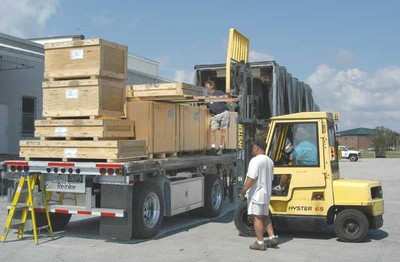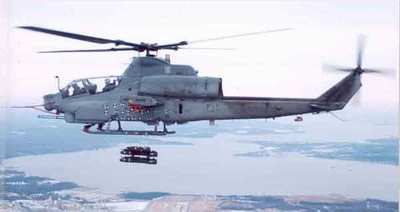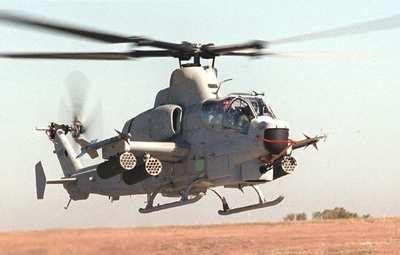USMC Ships H-1s In Crates For Upgrade
At first glance, it might seem that one of the depot's newest
programs is a complete reversal of the normal work process that is
done here. Under this program, a fully-assembled helicopter flies
in –- and, later, is trucked out in crates.
And that's exactly how the Marine Corps wants it.

It is all part of the US Marine Corps' H-1 upgrade program,
which teams the depot with Bell Helicopter to remanufacture the
existing AH-1W Super Cobra and the UH-1N twin-engine Huey into the
AH-1Z and UH-1Y configurations.
The first completed kit for the H-1 remanufacture program left
the depot Sept. 24 on its way to the Bell Helicopter facility in
Amarillo, Texas. An AH-1W, which flew in here April 8, was shipped
by heavy truck to the Texas plant for transition into the new AH-1Z
model.
The "reman" program started with four aircraft last fiscal year,
two of each model. Those numbers are scheduled to increase to seven
this fiscal year, with additional increases each year until
reaching a peak of 46 aircraft in FY 2012. The program is scheduled
to run through FY 2015. In all, 100 Hueys and 180 Cobras were
originally scheduled for work here.

Initial work on the aircraft was done by artisans from the H-1
Shop, until a new shop was created Oct. 1. Now, due to the growing
workload, the H-1/Quick Engine Change shop is handling the reman
project. According to Donnie McCall, production supervisor on the
reman project, the new shop consists mainly of sheetmetal
mechanics, airframes mechanics and electricians.
The first step of that remanufacture is when artisans here tear
down the older models and package the reusable components into kits
for shipment to the Bell facility. The Hueys are being broken down
into smaller components than the Cobras, which leave here with more
of their fuselage intact, said Chuck Morris, H-1 business planning
rep. Each is being shipped from here in eight packages –
commonly known here as a "ship set." The process involves removal
of parts that will be used in the remanufactured models, and
repair, refurbishment or replacement of those parts. "We have to
bring each part into ‘condition of supply' before we pass it
to Bell," said Morris.

Improvements incorporated in the upgrade at Bell include a more
powerful General Electric T700 engine, a four-bladed,
all-composite, hingeless and bearingless main rotor system and tail
rotor, as well as identical drive trains, hydraulics and electrical
distribution systems. By using common systems – the two
aircraft will be more than 85 percent identical – the cost of
logistics support for both will be dramatically reduced and will
allow for vastly improved shipboard operability. Far less critical
shipboard space will be needed to store spare parts and support
equipment.
Advanced technology will provide the H-1 fleet with increased
battlefield survivability aimed at greater mission success with
fewer combat losses. In addition, the crashworthiness of both the
UH-1Y and the AH-1Z will be improved. The "Y" and "Z" models begin
their rebirth in Amarillo to become "new" weapons for the
warfighter.
 NTSB Final Report: Cozy Cub
NTSB Final Report: Cozy Cub ANN FAQ: Contributing To Aero-TV
ANN FAQ: Contributing To Aero-TV Classic Aero-TV: Seated On The Edge Of Forever -- A PPC's Bird's Eye View
Classic Aero-TV: Seated On The Edge Of Forever -- A PPC's Bird's Eye View ANN's Daily Aero-Linx (04.29.25)
ANN's Daily Aero-Linx (04.29.25) ANN's Daily Aero-Term (04.29.25): Execute Missed Approach
ANN's Daily Aero-Term (04.29.25): Execute Missed Approach





